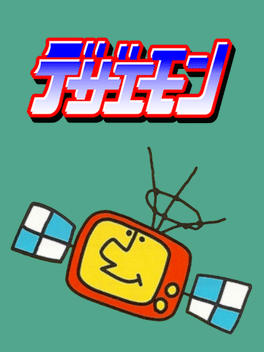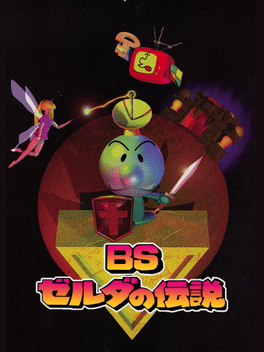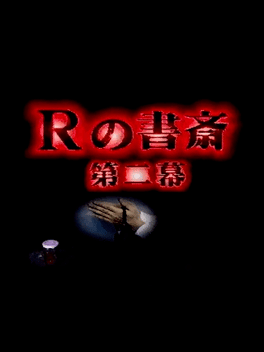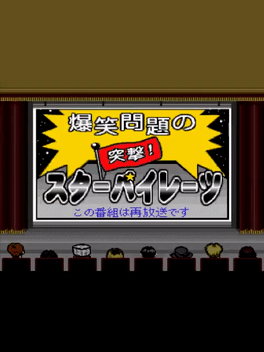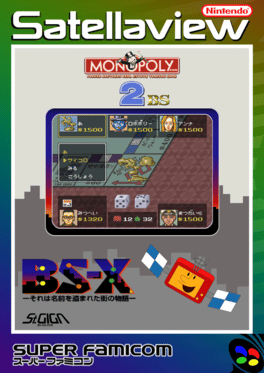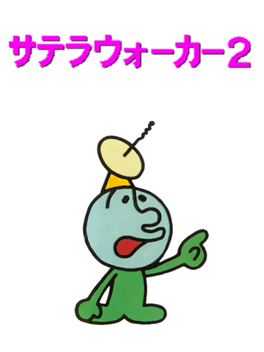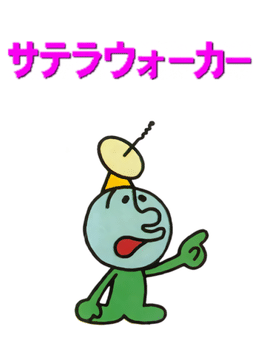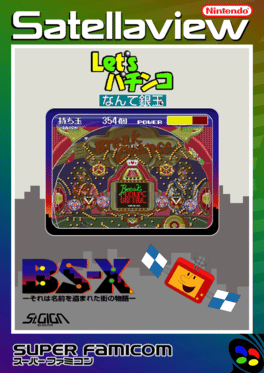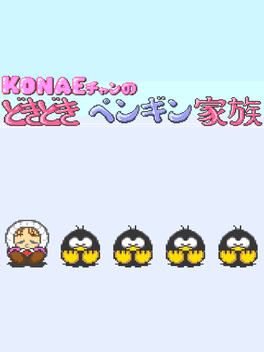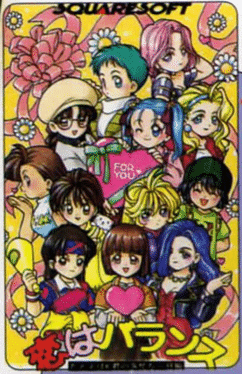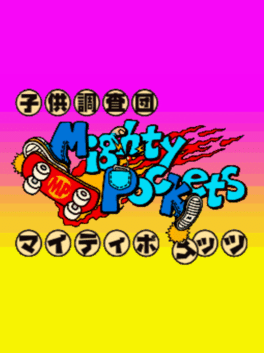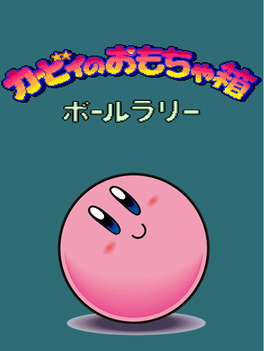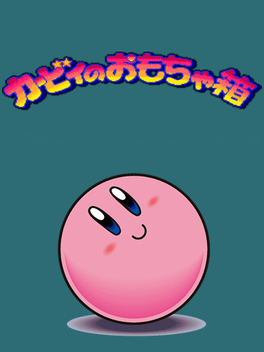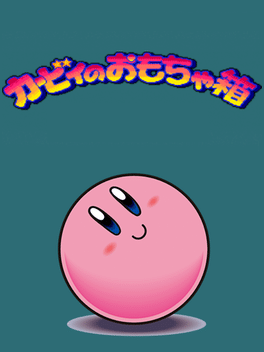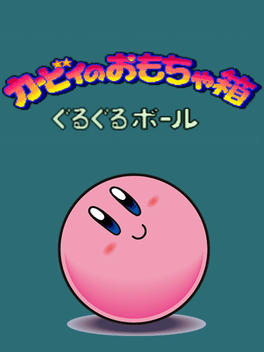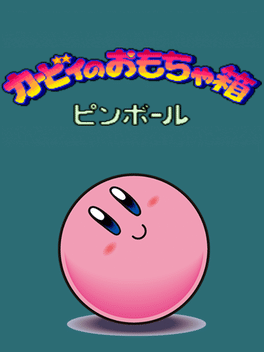Most Popular Satellaview Games - Page 14
-
Panel de Pon: Event Version
1995
Panel de Pon: Event Version was an event released on the Super Famicom's Satellaview service. This Event version is notable as it predates the original Panel de Pon by 10 days because its used as one of the ways for consumers to try the game out. -
Dezaemon BS-X Version: BS-X Shooting
1994
Dezaemon BSX Version: BS-X Shooting is an action/shooter game, developed and published by Athena, which was released in Japan in 1996 for the Satellaview (Super Famicom add-on). -
BS Zelda no Densetsu Map 2
1995
BS Zelda no Densetsu Map 2 is a sequel to BS Zelda no Densetsu, released for the Super Famicom add-on Satellaview. It is a reimagining of the original The Legend of Zelda for the NES. The player's avatar is the BS-X avatar, not Link. The game was broadcast through the Satellaview service as was Soundlink compatible, meaning it had orchestral music, narration and specific timed events. -
R no Shosai: Dai-Ni Maku
1997
This is the second act of the mystery sound novel R no Shosai, a downloadable 4-part Soundlink game for the Satellaview that was broadcast in at least 2 distinct runs between June 1, 1997 and February 21, 1998. The voice actor was Koyama Takeshi. -
Bakushou Mondai no Totsugeki Star Pirates
1997
Bakushou Mondai's Assault of the StarPirates is a game released exclusively for the Satellaview (Super Famicom add-on) in Japan. It featured a duo of famous japanese comedians called Bakusho Mondai. It had Soundlink support and was released in four chapters. -
BS Monopoly: Kouza Boardwalk he no Michi
1995
BS Monopoly: Advance to Boardwalk is an adaptation of the board game Advance to Boardwalk to the Satellaview (japanese Super Famicom add-on). It had Soundlink support and was released in 4 chapters. Derived from "ザ・モノポリーゲーム2 (The Monopoly Game 2), the game features Monopoly. The player can use "Giga (used in BS-X city)" as currency. An actor Akira Takarada hosts the program, while secret codes are told to the player during the game. -
SatellaWalker 2
1998
SatellaWalker 2
1998
SatellaWalker 2 (「サテラウォーカー2」) is a downloadable 2-part Soundlink game for the Satellaview that was broadcast between February 15, 1998 and February 28, 1998. SatellaWalker 2 was broadcast as the sequel to the earlier-broadcast SatellaWalker (「サテラウォーカー」) of July 1997. -
SatellaWalker
1997
SatellaWalker
1997
SatellaWalker (also known by its shorthand, SW) is a Downloadable 2-part Soundlink game for the Satellaview that was broadcast between June 29, 1997 and January 2, 1998. It is a pseudo-RPG adventure game that takes place in the world of the BS-X BIOS. The player's avatar character (the same one from BS-X) walks around the Town Whose Name has been Stolen accomplishing various activities and collecting various items. -
Panel de Pon Event '98
1997
Panel de Pon Event '98 is a modified special event version of Panel de Pon that was broadcast between December 28, 1997 and January 31, 1998 for the Satellaview Super Famicom peripheral. This game only has 1P Stage Clear mode (five stages only, which only skips Lip's Stage) and the 2P Vs. mode with no background characters. -
Let's Pachinko: Nante Gindama
1998
Let's Pachinko: Nante Gindama is a view-limited Downloadable game for the Satellaview that was broadcast in at least 2 runs between February 1, 1998 and November 28, 1998. Early game broadcasts were accompanied by the Let's Pachinko: Seiseki Magazine, however these ceased after February 28, 1998. -
Konae-chan no Doki-doki Penguin Kazoku
1996
Konae-chan no DokiDoki Pengin Kazoku (KONAEちゃんのドキドキペンギン家族) is a Downloadable Event Game developed by Pax Softnica for the Satellaview. It stars Konae and was distributed as a tie in to the Radio Program "If Tomorrow Comes...". The premise of BS Konae-Chan no DokiDoki Pengin Kazoku is to cross a freezing body of water by jumping across rows of glaciers without falling into the water. Points are awarded based on the number of penguins collected. -
Koi ha Balance: Tatoeba K-kun no Tabou na Ichinichi-hen
1996
Koi ha Balance: Tatoeba K-kun no Tabou na Ichinichi-hen is a Downloadable game for the Satellaview that was first broadcast on January 27, 1996. The game is a board game and it features, among other characters, both Gaspar and Johnny from the earlier Square title, Chrono Trigger. It is a board game about love-related topics presented in an humorously over-the-top manner. -
BS Spriggan Powered
1996
BS Spriggan Powered
1996
BS Spriggan Powered (「BSスプリガン・パワード」) is a downloadable 5-part Soundlink game for the Satellaview that was broadcast in at least 2 runs between May 26, 1996 and September 28, 1996. The game has two versions: "Prelude" and the "Main Story". Audio broadcasting of the game is advice on the game (Prelude) and voice drama told by characters (Main Story). The voice actors were Hikaru Midorikawa and Narumi Hidaka. -
Kodomo Chousadan Mighty Pockets
1997
Kodomo Chousadan Mighty Pockets is a downloadable 3-part Soundlink game for the Satellaview that was broadcast in at least 2 runs between September 7, 1997 and March 28, 1998. The game plays like a board game with a detective motif similar to the game of Clue/Cluedo. The rules of the game however, are considerably different. Throughout the game, SoundLink narration is used; including rapping over Michael Jackson sound samples and remixes of 1950s American Television. -
Kirby no Omochabako: Ball Rally
1996
In Kirby's Toy Box - Ball Rally, the player's goal is to guide Kirby through an obstacle course. He/she can do this using proper timing and the A Button; when A is pressed, some green platforms extend while others retract. Spherical Kirbys are released from the top-most door one by one. They can't stop rolling, so the player must extend the right platforms to guide the Kirbys safely over spikes. As more Kirbys join the playing field, it becomes increasingly difficult to guide them all to the exit. The player scores points by getting a Kirby to the exit. There are 50 Kirbys altogether. Like every other sub-game in Kirby's Toy Box, this game could only be downloaded by the Satellaview during the brief period it was broadcast. -
Kirby no Omochabako: Pachinko
1996
This game is like a pachinko machine; the goal is to launch the spherical Kirbys the player is given into the pockets of the machine. The player is given two minutes to fire an unlimited number of Kirbys, and he/she is given control of the power put into each shot. Ten points are awarded whenever a Kirby lands in a pocket. If a shot lands directly atop the big Kirby in the center, the player will temporarily win a chance to earn more points; the big Kirby will raise his arms and give 100 points to each shot that hits him in one of three locations. When time is up, the game ends. Like every other sub-game in Kirby's Toy Box, this game could only be downloaded by the Satellaview during the brief period it was broadcast. -
Kirby no Omochabako: Arrange Ball
1996
In Kirby's Toy Box - Arranging Balls, the player is given the goal of launching spherical Kirbys into the nine holes occupied by Mr. Frostys. The player is given a certain number of Kirbys to launch, and the game ends when he/she runs out of Kirbys to shoot. The player can choose how much power to put into each shot. Points are awarded if the player lands three Kirbys in a row—the more rows the player completes, the more points he/she will earn. Like every other sub-game in Kirby's Toy Box, this game could only be downloaded by the Satellaview during the brief period it was broadcast. -
Kirby no Omochabako: Cannonball
1996
In Kirby's Toy Box - Cannonball, the player controls a giant robotic Rick, which can shoot spherical Kirbys out from its head. The game is a simplified take on the same concept used by numerous other games based around lobbing parabolic projectiles at opponents over hills with destructible terrain, such as Scorched Earth and the |Worms series. A large hill divides the screen into two halves, with Player 1 on the left; the right side is occupied by another robot hamster, which is controlled by a CPU or a second player. The goal of the game is defeat the opponent robot by hitting it with enough Kirbys. Each robot can move its head to change the direction and angle of the Kirbys it fires. They can also walk slowly forward and backward. The robots can blast tiny holes in the hill by shooting it with Kirbys. When one robot is defeated, the game ends with surviving robot being the winner. There are multiple stages to play on, but the only difference between them is the scenery. Clouds will stop any Kirby that hits them, -
Kirby no Omochabako: Guru-guru Ball
1996
In this game, the player fires spherical Kirbys through a spiral tube, which is designed to look like Efreeti. This tube has holes in it, which a speedy Kirby will pass right over. The point is to fire the Kirbys with just the right amount of power to pass over certain holes but slow down and fall into another hole. Different holes give different numbers of points, so the goal of the player is to shoot his/her Kirbys into the highest-scoring hole as much as possible. When the player runs out of Kirbys, the game ends. Like every other sub-game in Kirby's Toy Box, this game could only be downloaded by the Satellaview during the brief period it was broadcast. -
Kirby no Omochabako: Pinball
1996
This game is a simple game of pinball, where the player has to launch Kirby into the enemies on the stage to earn points. The hero first has to be shot out of a cannon at whatever power level the player chooses. If Kirby falls down the drain three times, the game ends. As with Kirby's Toy Box - Baseball, the game could be played over and over during the brief period it was broadcast, but could not be played after that time, unless it had already been saved onto. Enemies in this game include King Dedede, Mr. Frosty, Kracko, Co-Kracko, Bounder, Waddle Dee, Crack-Tweet, and Elieel. Like every other sub-game in Kirby's Toy Box, this game could only be downloaded by the Satellaview during the brief period it was broadcast.

